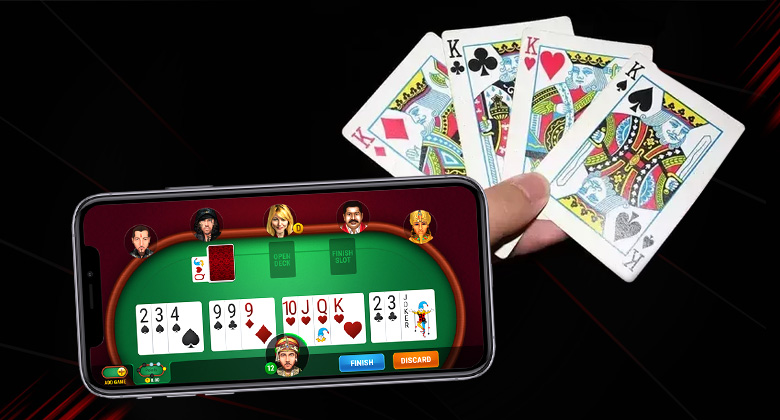The objective of a rummy game is to arrange the 13 cards dealt to you in sequences or sequences and sets and make a declaration. Both pure and impure rummy sequence are the group of three or more consecutive cards of the same suit, whereas a set is a group of three or four cards of the same rank but different suits.
To make a valid declaration, it is mandatory to have at least two sequences, at least one of which must be a pure sequence – a card combination where no card has been substituted by a joker. The remaining combinations can be either sequences or sets. The main goal is to create all these required combinations and make a valid declaration before anyone else at the table.
The play
- The game is played by two to six players, using one or two card decks, depending on the number of players. Every player is dealt 13 cards at the beginning of the game.
- The remaining cards are placed face down at the centre of the table, forming the closed deck. The top card from the closed deck is revealed and placed next to the closed deck. That face-up card becomes the starting point for the creation of an open deck.
- A wild joker is randomly picked from the closed deck, and all the cards of the same rank or value become wild jokers in that game.
- A player must pick a card from the closed deck or the open deck on each turn and discard a card to the open deck.
Rummy sequences
A sequence is a group of three or more consecutive cards of the same suit. The player needs to create at least two sequences with the 13 cards available to them. Out of the two sequences, at least one must be a pure sequence.
- Pure Sequence: A pure sequence is a sequence where no card has been replaced by a joker. For example, 7♠-8♠-9♠ is a pure sequence.
- Impure Sequence: In this rummy sequence, a missing card is replaced by a joker to complete the combination. For example, J♥-Q♥-7♦(WJ) is an impure sequence where a wild joker (7♦) has been used as a substitute for K♥ to complete the combination.
Some important rules of Rummy sequences
- A valid sequence must have at least three cards, but it can have four or more cards too.
- In most rummy variants, the ace is considered both a high-value and a low-value card. This means that it can be grouped with 2s and 3s as well as Qs and Ks to create a sequence.
- The ace cannot be used as a connecting card. So while A♠-2♠-3♠ and Q♠-K♠-A♠ are valid sequences, K♠-A♠-2♠ is an invalid sequence.
Rummy sets
In rummy sets, three to four cards of the same rank but different suits are grouped together. For example, 3♦-3♣-3♥. Jokers can be used as a substitute for any missing card in a set.
Differences between 10-card rummy and 13-card rummy
- In 10-card rummy, only 10 cards are dealt to the players, whereas in the classic 13-card variant, 13 cards are dealt to each player.
- In the 10-card rummy game, an additional sequence is not mandatory to make a valid declaration. However, in 13-card rummy, an additional sequence (either pure or impure) is mandatory along with a pure sequence.
- The maximum score a player can get in 10-card rummy is 60 points. On the other hand, the maximum points a player can get in 13-card rummy is 80.
Why play rummy online
The experience of playing rummy can be uplifting for most players. Apart from an intuitive user interface, the prospect of daily bonuses and offers, free tournaments and different varieties of cash games can be a thrilling experience for those who are new to the world of rummy. Online rummy sites like Junglee Rummy are a one-stop destination for people looking to compete with real players from across the country and as well as a way of winning real cash prizes.
Rummy is a game of skill. Once you know the required skills to play rummy, you will start making strides and eventually be able to defeat even the most skilled opponents. Finally, the prizes and the cash bonuses are incentives enough to try out online rummy.
